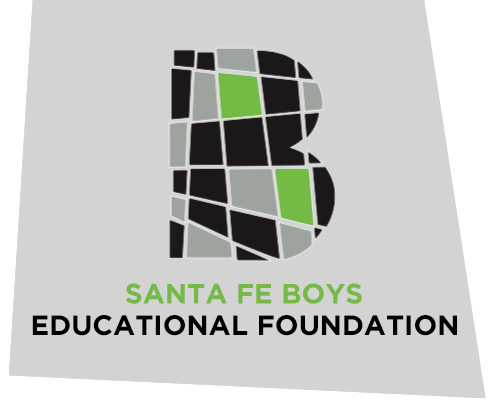Boys at Risk III
Helping Boys Thrive
Program, Learning Objectives, and Bibliography
November 3, 2021, 8:30 am – 3:30 pm, Santa Fe Community Convention Center & Online
Program
8:00 am—Light breakfast (if safety conditions permit)
8:30 am—Introduction, Paul Golding, President, Santa Fe Boys Educational Foundation
8:40 am—Introduction, Tim Wright, Gurian Institute
8:45 – 10:15 am— Protecting the Emotional Lives of Boys, Michael Gurian
 Michael Gurian will explore how the minds of boys and girls learn and grow, including brain differences that impact pre-K–12 education and social emotional development throughout the lifespan. He will provide insight into best teaching, parenting, counseling, and mentoring practices for boys, and safe, effective electronics and technology standards for various stages of boys’ development. This keynote will feature research from Michael Gurian’s books especially Boys & Girls Learn Differently, The Minds of Boys, and The Wonder of Girls, among others.
Michael Gurian will explore how the minds of boys and girls learn and grow, including brain differences that impact pre-K–12 education and social emotional development throughout the lifespan. He will provide insight into best teaching, parenting, counseling, and mentoring practices for boys, and safe, effective electronics and technology standards for various stages of boys’ development. This keynote will feature research from Michael Gurian’s books especially Boys & Girls Learn Differently, The Minds of Boys, and The Wonder of Girls, among others.
10:15 am—Break
10:30 – 12:00 noon—Understanding the Relationships of Trauma, Poverty, and Learning
Michael Gurian’s second presentation in the morning will provide in depth insight into how poverty, trauma, and violence are processed and expressed in and by the male brain. He will include PET, SPECT, and MRI scans that display brain, molecular, and hormonal differences between the sexes, including how male and female brains experience depression and other brain disorders. These keynotes feature research from Michael’s newest book on boys, Saving Our Sons, which focuses on educating, raising, and counseling boys toward educational achievement, health, wellness, motivation, and a sense of thriving with resilience in a highly complex world.
12:00 noon – 1:00 pm—Lunch Break & Book Signing
1:00 – 2:00 pm—Inspiring Communities to Invigorate Healthy Fathering
 Marion Hill will present some of his own powerful, developmental story as an African-American boy and man growing up in a military family around the world. He will also use anecdotes from his two decades of work in child development and father-engagement to bolster audience understanding of the crucial role fathers play in children’s lives.
Marion Hill will present some of his own powerful, developmental story as an African-American boy and man growing up in a military family around the world. He will also use anecdotes from his two decades of work in child development and father-engagement to bolster audience understanding of the crucial role fathers play in children’s lives.
He will follow with evidence-based strategies and solutions for engaging fathers in the cause of helping boys thrive. Because of his work in largely Hispanic / Latino communities in Arizona, he will provide culture-specific insights and evidence-based success strategies for engaging Hispanic / Latino fathers and male role models in the lives and education of their children beginning in infancy and the preschool years.
2:00 – 2:15 pm—Break
 2:15 – 3:15 pm—Forging the Spirit of Boys Through Healthy Rites of Passage
2:15 – 3:15 pm—Forging the Spirit of Boys Through Healthy Rites of Passage
Tim Wright will focus on instilling a vision for manhood into boys. He will employ the scientifically established organizational and activational effects of testosterone on the male brain as metaphor—and rites of passage as the scaffolding—for the basis of healthy male development.
Forging the Spirit of Boys will introduce character qualities that will help boys harness their testosterone-driven energy, along with adult-focused strategies for imparting those qualities into boys as they grow.
3:15 – 3:45 pm—Q & A, Michael Gurian, Marion Hill, Tim Wright
3:45 pm—Conference Close
Learning Objectives
At the conclusion of each speaker’s presentation, participants will be able to:
Michael Gurian
- Describe two examples of how the field of gender neuroscience is altering what you know about the psychology of boys in early childhood.
- Discuss two specific needs of boys from birth to adulthood.
- Identify three key stressors and two social-emotional factors that differ between girls and boys beginning in early childhood.
- Describe two ways boys and girls may differ in the way they evidence and signal their trauma.
Marion Hill
- Describe three ways that the field of fatherhood science compels communities to engage fathers and male role models in children’s education, especially that of boys.
- Identify two models and proven strategies for motivation, learning, and behavioral intervention of fathers in boys’ lives.
- Demonstrate three strategies for engaging fathers in children’s lives beginning in the preschool years and before.
- Implement four practical tools that fit the curricular or social areas of each audience member, including tools for under-resourced communities.
Tim Wright
- Identify two characteristics of a rite of passage.
- List three character qualities that can help shape boys into good men.
- Identify four elements of a strategic plan for raising boys into men.
- List two components of a vision for manhood for the boy in one’s clinical practice.
Bibliographical References
For Michael Gurian; Protecting the Emotional Lives of Boys & Understanding the Relationships of Trauma, Poverty, and Learning
Case, A. & Deaton, A. (2015). Rising morbidity and mortality in midlife among white non-Hispanic Americans in the 21st century, Proceedings of the National Academy of Sciences, 112:49, 15078-15083. Retrieved February 20, 2021, from https://www.jstor.org/stable/26466527
Cornblath, E. J. et al. (2019). Sex differences in network controllability as a predictor of executive function in youth. Neuroimage 188, 122-134. Doi: 10.1016/j.neuroimage.2018.11.048
Cornwell, C. et al.. (2013). Non-cognitive skills and the gender disparities in test scores and teacher assessments: Evidence from primary school,” Journal of Human Resources 48 236-64.
Geary, D., (2016). Evolution of sex differences in trait- and age-specific vulnerabilities. Perspectives in Psychological Science, 11(6), 855-876.
Grandjean, P. et al. Neurobehavioral effects of developmental toxicity. Lancet Neurology,13, 333- 338. http://dx.doi.org.libproxy.unm.edu/10.1016/S1474-4422(13)70278-3
Heitzeg, M. M. et al. (2018). Sex differences in the developmental neuroscience of adolescent substance use risk. Behavioral Sciences, 23, 21-26. doi.org/10.1016/j.cobeha.2018.01.020
Kerr, B.A. and Multon, K.D. “The Development of Gender Identity, Gender Roles, and Gender Relations in Gifted Students,” Journal of Counseling and Development, April 2015, Vol 3: 163-191.
Lombana, W. G. & Vidal, S. E. G. (2012). Pain and gender differences: A clinical approach. Colombian Journal of Anesthesiology, 40:3,207-12. Doi: 10.1016/j.rcae.2012.05.006
Medaglia, J. D. et al. (2018). Brain state expression and transitions are related to complex executive cognition in normative neurodevelopment. NeuroImage, 166, 293-306. doi.org/10.1016/j.neuroimage.2017.10.048
Meyers, L. (2014, July). The toll of childhood trauma, Counseling Today, 29-36. ct.counseling.org.
Olson, K. R. et al. (2015). Gender cognition in transgender children. Psychological Science, 26 ,467-474.
Rena. L. (2014). Why women see differently from the way men see, Journal of Sport and Health Science, 3:3, 155-162. Doi: . org/10.1016/j.jshs.2014.03.012
Ruigroka, A., et al.. (2014). Meta-analysis of sex differences in human brain structure. Neuroscience and Biobehavioral Reviews, 39, 34-50. Doi: 10.1016/j.neubiorev.2013.12.004
Wheelock, M. D. et al.. (2019). Sex differences in functional connectivity during fetal brain development. Developmental Cognitive Neuroscience, 36, 1-8. Doi.org/10.1016/j.dcn.2019.100632
For Marion Hill: Inspiring Communities to Invigorate Healthy Fathering
Antti, L. et al. (2015). Paternal antisocial behavior and sons’ cognitive ability: A population-based quasiexperimental study. Psychological Science, 26:1, 78-88.
Emory Health Sciences. (2017, February 17). How dads bond with toddlers. Neuroscience News. http://neurosciencenews.com/oxtyocin-dad-bonding-6127
Kruk, E. (2012, May 23). Father absence, father deficit, father hunger: The vital importance of paternal presence in children’s lives. Psychology Today. https://www.psychologytoday.com/us/blog/co-parenting-after-divorce/201205/father-absence-father-deficit-father-hunger
Mitchell, C. et al. (2017). Father loss and child telomere length. Pediatrics, 140, 1-10. Doi: 10.1542/peds.2016-3245
Parker, K. & Wang, W. (2013). Modern parenthood: Roles of moms and dads converge as they balance work and family. Pew Research Center Report, Social and Demographic Trends, Washington, D.C. https://www.pewresearch.org/social-trends/2013/03/14/modern-parenthood-roles-of-moms-and-dads-converge-as-they-balance-work-and-family/
Schore, A. N. (2017). All our sons: The developmental neuobiology and neuroendocrinology of boys at risk. Infant Mental Health Journal, 38:1,15 – 52. DOI: 10.1002/imhj.21616
For Tim Wright: Forging the Spirit of Boys Through Healthy Rites of Passage
Allen, M. S. & Laborde, S. (2014). The role of personality in sport and physical activity. Current Directions in Psychological Science, 23:6, 460-465
Goossens, L. et al. (2015) The genetics of loneliness: Linking evolutionary theory to genome-wide genetics, epigenetics, and social science. Perspectives on Psychological Science, 10:2, 213-226.
Jaffe, E. (2015). Portrait of self-control as a young process. Journal of the Association for Psychological Science, 28, No. 6. https://www.psychologicalscience.org/observer/portrait-of-self-control-as-a-young-process
Janusz, B. & Walkiewicz, M, (2018).The rites of passage framework as a matrix of transgression processes in the life course. Journal of Adult Development, 25:3,151-159
Ozen, S. & Darcan, S. (2011). Effects of environmental endocrine disruptors on pubertal development. Journal of Clinical Research in Pediatric Endocrinology, 3, 1-6.
Reed, E. E, (2014, October 14). Man up: Young men’s lived experiences and reflections of counseling. Journal of Counseling & Development, 92, 428-437.
To sign up for email updates as planning proceeds, please join our email list:
This event is co-sponsored by the Santa Fe Boys Educational Foundation and the Gurian Institute.
Resources
Read articles from our conferences about boys at risk.
Conference News
Watch videos of 2019 conference presentation.
Contact
Email: info@santafeboys.org


